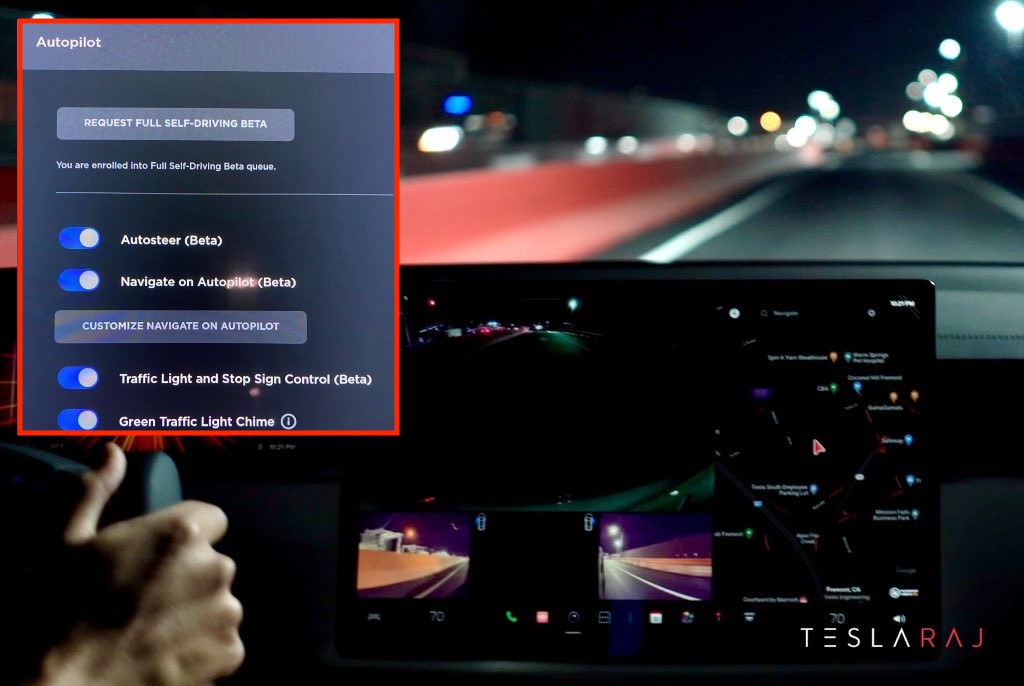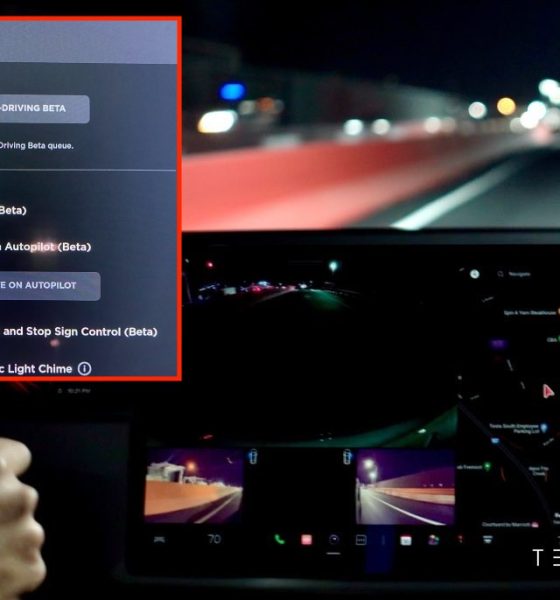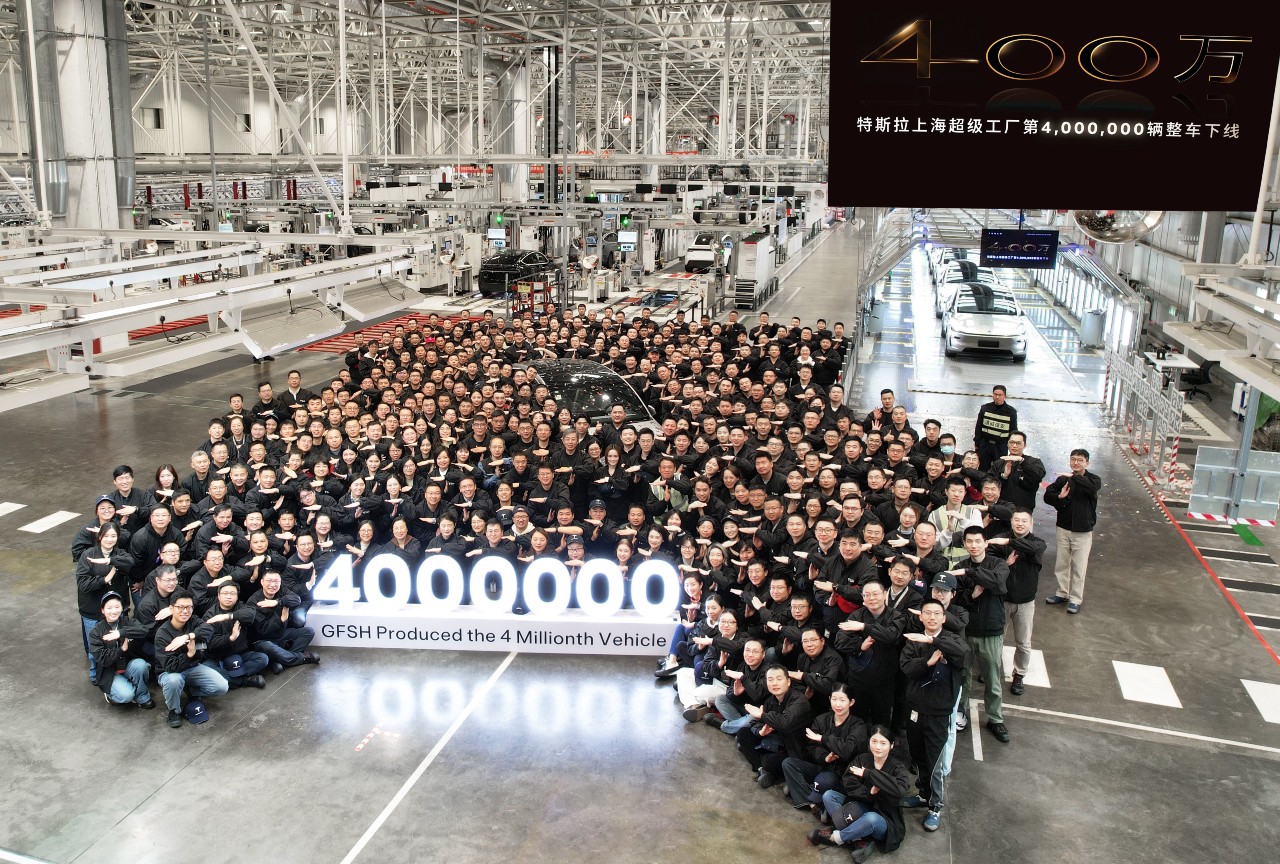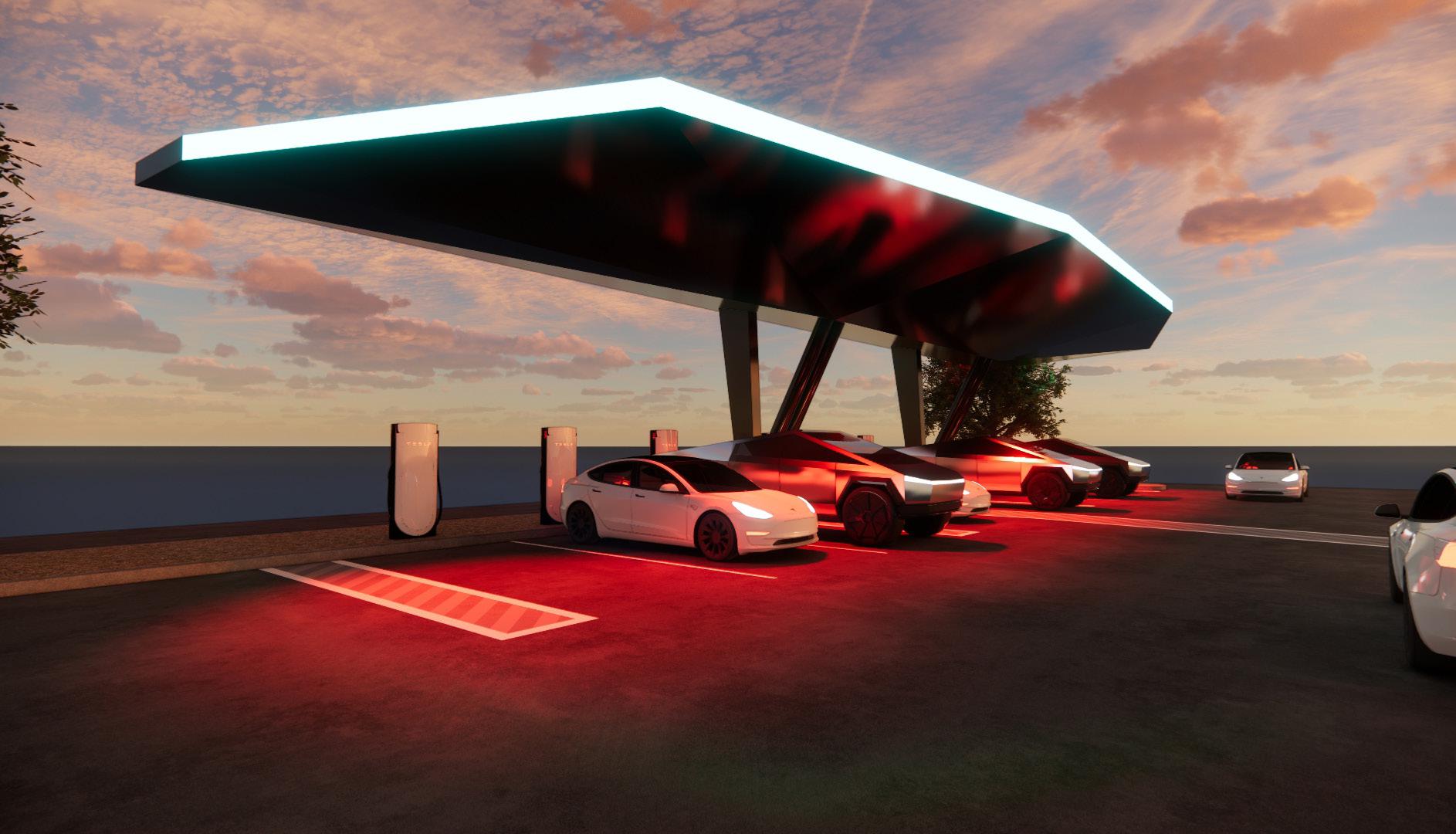

News
Tesla “Request FSD Beta” button formally gets released
After months of waiting, Tesla owners who wish to take part in the company’s FSD Beta program could now formally request the advanced driver-assist system to be loaded into their vehicle. The release of the “Request FSD Beta” button comes before the rollout of FSD Beta 10.1, which is expected to be distributed to the company’s testers over the weekend.
The wait has been long for Tesla owners who are looking to test out the company’s most advanced driver-assist system to date. Initially intended for release months ago, the rollout of the “Request FSD Beta” button has been delayed multiple times. True to Elon Musk’s recent statements on Twitter, however, the wait for the famed button is now over, with Tesla releasing the function in its software update 2021.32.22. As per the update’s Release Notes:
Just received @tesla software update version 2021.32.22 for our model S a couple hours ago. Request Full Self-Driving Beta is here @elonmusk ! https://t.co/miJElVf01S pic.twitter.com/feLnkbPI8R
— Sofiaan Fraval (@Sofiaan) September 25, 2021
“Request Full Self-Driving Beta”
“You can now request early access to Full Self-Driving Beta pending eligibility. To get started, tap ‘Controls’>’ Autopilot’>Request Full Self-Driving Beta’ and follow the instructions.”
Similar to the FSD Beta program that has initially been released to the company’s first batch of testers last October, Tesla made it a serious point to highlight that safety must be paramount when using the advanced driver-assist system. This could be seen in the heavy emphasis on cautious driving that the company references in its recent update, as well as the use of Safety Scores to determine which drivers are eligible for the program.
https://twitter.com/28delayslater/status/1441716622868172805?s=21
“Thank you for your interest in limited early access Full Self-Driving Beta! The Tesla team is analyzing your vehicle driving data and Safety Score to determine eligibility. You can view your Safety Score from the Tesla app at any time (version 4.1.0 or newer). If eligible, you will receive a software update as part of the limited early access,” Tesla wrote, adding that owners also have the option to opt-out of the FSD Beta test program.
Tesla requires owners to agree to a number of terms and conditions for the FSD Beta program. First off, the company noted that owners must “consent to the collection and review of ongoing VIN-associated vehicle driving data” while enrolled in the program. Also, participants must “understand that when using FSD Beta, (they are) responsible for remaining alert with (their) hands on the wheel, and must be prepared to take action at any time.”
— Flavin (@Flavinrocks) September 25, 2021
The company further made it clear that while FSD Beta would provide vehicles with advanced driver-assist capabilities that would enable navigation on areas such as inner-city roads, “FSD Beta does not make (vehicles) autonomous.” Tesla also made it clear that access to the advanced driver-assist system could be revoked at any time. This should discourage drivers from abusing the system, such as when Consumer Reports posted a video showing how to use Autopilot without anyone in the driver’s seat.
FSD Beta request button goes live tonight, but FSD 10.1 needs another 24 hours of testing, so out tomorrow night
— Elon Musk (@elonmusk) September 25, 2021
Tesla’s emphasis on safe driving with the release of the “Request FSD Beta” button is understandable. The scrutiny faced by new technologies such as Autopilot and FSD is immense, after all, and it would be very easy for critics to take control of the narrative if something untoward were to happen. This was highlighted by Elon Musk recently when he noted on Twitter that the initial ~2,000 FSD Beta testers have been testing the advanced driver-assist system for almost a year with no accidents whatsoever. As the program expands with the “Request FSD Beta” button, Tesla would definitely do what it can to keep the system’s safety record as intact as possible.
Don’t hesitate to contact us with account tips. Just send a message to tips@teslarati.com to give us a heads up.

News
Tesla announces major milestone at Gigafactory Shanghai
First deliveries started in December 2019, with the first units being given to employees. By the end of 2020, the plant was building cars at a run rate of around 150,000 vehicles annually.

Tesla has announced a major milestone at its Chinese manufacturing facility, Gigafactory Shanghai, confirming on Monday that it had built its four millionth vehicle.
Tesla Gigafactory Shanghai first started building cars back in October 2019 with Model 3 assembly, just ten months after the company broke ground on the plant’s 86-hectare piece of land.
First deliveries started in December 2019, with the first units being given to employees. By the end of 2020, the plant was building cars at a run rate of around 150,000 vehicles annually. Production continued to ramp up, and by September 2023, less than three years after it started building Tesla’s EVs, it had built its two millionth vehicle.
Fast forward to December 2025, and Tesla has confirmed that four million cars have rolled off of production lines at the plant, a major milestone in the six short years it has been active:
Produced our 4 millionth vehicle at Gigafactory Shanghai🎉
Thanks to all our owners and supporters❤️ pic.twitter.com/DayVXUr220— Tesla Asia (@Tesla_Asia) December 8, 2025
The capacity at Giga Shanghai is exceeding 950,000 vehicles per year, and this year, the company has delivered 675,000 cars through the first three quarters. It is also the only plant to manufacture the Model Y L, a longer wheel-based configuration of the all-electric crossover that is exclusive to the Chinese market.
Gigafactory Shanghai’s four million cars have not all stayed within the domestic market, either. For a considerable period, the factory was exporting a significant portion of its monthly production to Europe, helping Gigafactory Berlin supplement some Model Y volume and all of its Model 3 deliveries. This is due to the Berlin plant’s exclusive production plans for the Model 3.
The site is one of the most crucial in the company’s global plans, and Gigafactory Shanghai’s incredible pace, which has led to four million production units in just about six years. It’s fair to say that it won’t be long until we’re seeing Tesla celebrate the plant’s five millionth vehicle produced, which should happen sometime late next year or in early 2027, based on its current manufacturing pace.
The company also builds the Megapack on the property in an adjacent Megafactory.
News
Tesla gamifies Supercharging with new ‘Charging Passport’
It will also include things like badges for special charging spots, among other metrics that will show all of the different places people have traveled to plug in for range.

Tesla is gamifying its Supercharging experience by offering a new “Charging Passport,” hoping to add a new layer to the ownership experience.
While it is not part of the Holiday Update, it is rolling out around the same time and offers a handful of cool new features.
Tesla’s Charging Passport will be available within the smartphone app and will give a yearly summary of your charging experience, helping encapsulate your travel for that year.
It will also include things like badges for special charging spots, among other metrics that will show all of the different places people have traveled to plug in for range.
Tesla has just introduced “Charging Passport,” a new yearly summary of your charging.
• Charging badges: Iconic Charging badge (for visiting places like the Tesla Diner, Oasis Supercharger, etc), Explorer badge, green saver badge, etc.
• Total unique Superchargers visited
•… pic.twitter.com/c1DHTWXpj7— Sawyer Merritt (@SawyerMerritt) December 8, 2025
Tesla will include the following metrics within the new Charging Passport option within the Tesla app:
- Charging badges: Iconic charging badges for visiting places like the Tesla Diner, Oasis Supercharger, etc., Explorer Badge, and more
- Total Unique Superchargers Visited
- Total Charging Sessions
- Total Miles Added during Charging Sessions
- Top Charging Day
- Longest Trip
- Favorite Charging Locations
This will give people a unique way to see their travels throughout the year, and although it is not necessarily something that is needed or adds any genuine value, it is something that many owners will like to look back on. After all, things like Spotify Wrapped and Apple Music Replay have been a great way for people to see what music they listened to throughout the year.
This is essentially Tesla’s version of that.
With a handful of unique Superchargers already active, Tesla is also building some new ones, like a UFO-inspired location in New Mexico, near Roswell.
Tesla is building a new UFO-inspired Supercharger in the heart of Alien country
News
Tesla launches its coolest gift idea ever just a few weeks after it was announced
“Gift one month of Full Self-Driving (Supervised), which allows the vehicle to drive itself almost anywhere with minimal intervention.”

Tesla has launched its coolest gift idea ever, just a few weeks after it was announced.
Tesla is now giving owners the opportunity to gift Full Self-Driving for one month to friends or family through a new gifting program that was suggested to the company last month.
The program will enable people to send a fellow Tesla owner one month of the company’s semi-autonomous driving software, helping them to experience the Full Self-Driving suite and potentially help Tesla gain them as a subscriber of the program, or even an outright purchase.
Tesla is going to allow owners to purchase an FSD Subscription for another owner for different month options
You’ll be able to gift FSD to someone! https://t.co/V29dhf5URj
— TESLARATI (@Teslarati) November 3, 2025
Tesla has officially launched the program on its Shop. Sending one month of Full Self-Driving costs $112:
“Gift one month of Full Self-Driving (Supervised), which allows the vehicle to drive itself almost anywhere with minimal intervention. All sales are final. Can only be purchased and redeemed in the U.S. This gift card is valued at $112.00 and is intended to cover the price of one month of FSD (Supervised), including up to 13% sales tax. It is not guaranteed to cover the full monthly price if pricing or tax rates change. This gift card can be stored in Tesla Wallet and redeemed toward FSD (Supervised) or any other Tesla product or service that accepts gift card payments.”
Tesla has done a great job of expanding Full Self-Driving access over the past few years, especially by offering things like the Subscription program, free trials through referrals, and now this gift card program.
Gifting Full Self-Driving is another iteration of Tesla’s “butts in seats” strategy, which is its belief that it can flip consumers to its vehicles and products by simply letting people experience them.
There is also a reason behind pushing Full Self-Driving so hard, and it has to do with CEO Elon Musk’s compensation package. One tranche requires Musk to achieve a certain number of active paid Full Self-Driving subscriptions.
More people who try the suite are likely to pay for it over the long term.








